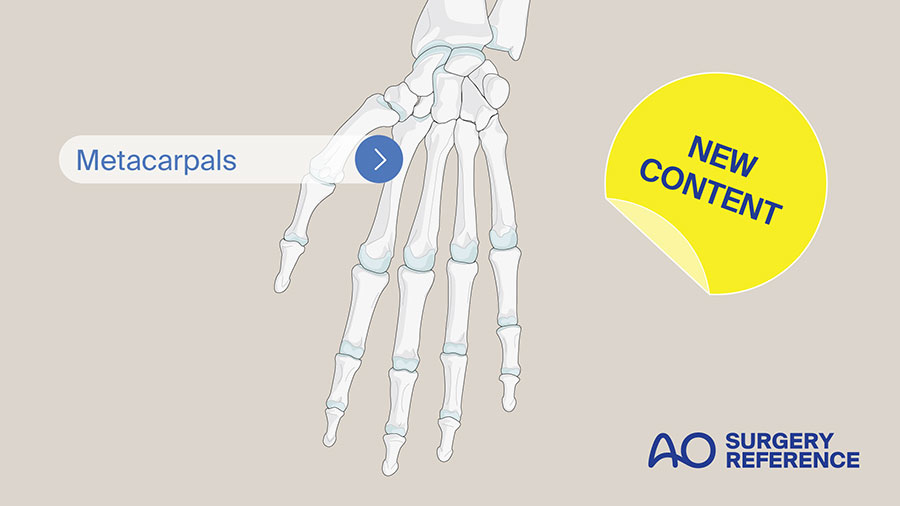AO Surgery Reference update: Publication of Hand - Metacarpals

The hand—our best work, communication, and expression tool—requires a detailed study of the anatomy to apply all the surgical techniques described. The main goal of treating hand injuries is to recover its pinch and grip function. To achieve this, the management of soft tissues is essential to avoid fibrosis and/or stiffness.
Editor’s comments
The hand comprises simple, repeating units combined as a system of sensate levers bringing the palmar sensory receptors of the fingers into optimal relation with the object of the visual attention.
The hand also functions as a load bearing platform: during power grip (involving the whole hand), and pincer or tripod grip (involving mainly the radial column of the hand) the intracarpal relationships change, guided and limited by the intercarpal ligaments, to distribute the resultant load to the radius and ulna at the distal forearm. This adjustment brings the carpal bones into an energy-efficient interosseous-stable state of ‘close-packing’, permitting load-transfer with minimal effort from the brachio-(meta)carpal muscles.
This edition addresses the challenges of internal fixation of the fractures and associated ligament injuries of the hand that often result in decrements – of sensibility or activity – caused by malalignments and instabilities. New information is offered about current trends including the utility of adjunctive arthroscopic management of some injuries, intramedullary fixation methods, and updated rehabilitation programs.
What does the revision include?
Fabio Suarez (CO) and Aida García (CO), with Simon Lambert (UK) as executive editor, have thoroughly revised the content and all illustrations. They updated the plating procedures to show the application of variable-angle locking plates and added the management of carpometacarpal and metacarpophalangeal joint dislocation.
The module has been amended with the following pages:
- Nonoperative treatment to most of the fracture types
- Intramedullary screw fixation to transverse fractures
- Patient assessment
- Patient positioning
- Complications and technical failures
- Postoperative treatment phases
Several approach and procedure videos have been added:
- Dorsal approach to MCP joint of the finger
- Palmar approach to MCP joint of the finger
- Phalanx—proximal fractures—extension block splint (Burke Halter)
- Metacarpal IV—long spiral fracture—fixation with two 2.0 mm lag screws
- Metacarpal III—short oblique fracture—fixation with a 2.0 mm lag screw and 2.0 mm variable angle adaption plate
- Metacarpal II—transverse shaft fracture—fixation with a 5-hole 2.0 mm LCP plate
- Metacarpal V, neck—subcapital and comminuted fractures—ORIF using 1.5 mm VA locking metacarpal neck plate
- Metacarpal V, neck—subcapital and comminuted fractures—intramedullary splinting with two 1.25 K-wires
